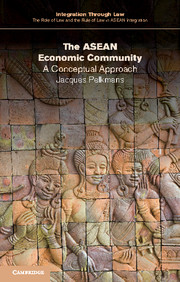
The ASEAN Economic Community: A Conceptual Approach
The Association of Southeast Asian Nations (ASEAN) has experienced rapid economic growth for many years. Although the population of ASEAN is larger than the EU-28, the emerging ASEAN market, called the ASEAN Economic Community (AEC), is still little understood by policy makers in many parts of the world, by business professionals and students, as well as by scholars in economics, business, politics and economic law. This book provides, for the first time, a rigorous analytical approach of the new AEC and its intricacies. It sets out its ambition, scrutinises its economic integration logic and detects its deficits. Besides a detailed analysis of the AEC Roadmap, the book also elaborates on its achievements. Several strategic economic options for the AEC, in particular as an instrument to accelerate the economic development of the region, are explored.
This book is rigorous about economic integration logic, providing greater clarity on factual (as opposed to declared) AEC ambitions, while exposing weaknesses, inconsistencies and deficits. Testing the mechanisms of the AEC, the book provides a detailed analysis of the AEC Roadmap and its implementation so far. The book also outlines future AEC economic strategy and explores several options of how ASEAN can exploit its hybrid remit of a single market and ‘production base’.
About the ASEAN Integration Through Law book series
Published by Cambridge University Press, this book series evaluates ASEAN’s community-building process and issues at the forefront of ASEAN law and policy. The series covers six themes: the general architecture and aspirations of ASEAN, the governance and management of ASEAN, the legal regimes in ASEAN, the ASEAN Economic Community, ASEAN and the world, and the substantive laws of ASEAN. Click here for the executive summaries of the books in this series.

